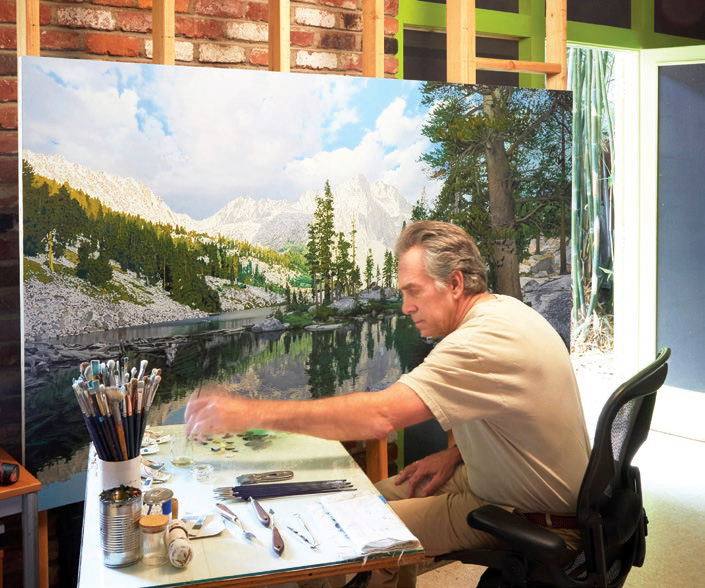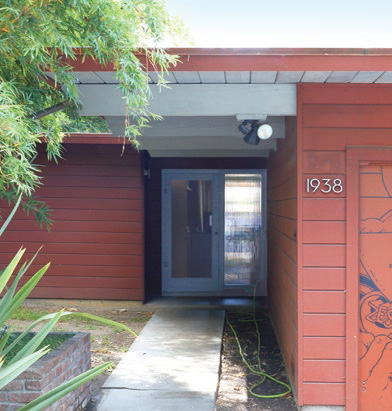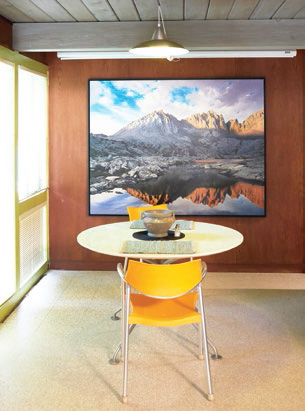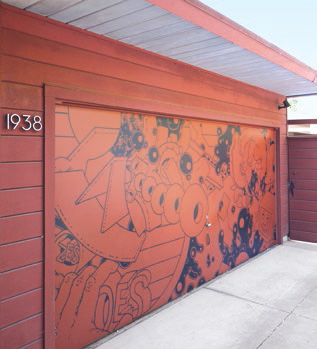Forging Friendships - Page 5
 |
The houses, especially the older ones, are small, and many have been enlarged. A prior owner added a room to the De Feos' home, which turned what had been the home's 'L'-shaped front into one shaped like a 'U.' That created an area they call their 'atrium,' which looks much like real Eichler atriums that wouldn't be part of the Eichler vocabulary until 1956.
Neighbor Matt Barthelemy's home has undergone a similar change. "Originally, there were three bedrooms and one bathroom. That was it," he says. "If it had been like that, we wouldn't have bought it. But because of the [added] master [bedroom] and the master bath, that works for us."
The previous owners who had remodeled the De Feo and Barthelemy homes took care to retain their original looks, as have many others. In 2004, when the 'Historic Quest' volunteers surveyed the original Green Gables homes to see if enough of them looked original to win a spot on the National Register, they determined that 46 did and 17 did not.
Since then, however, several homes that 'contributed' to the tract's historic look back then no longer do. In fact, a couple no longer resemble Eichlers at all. While the neighborhood still has enough architectural integrity to be a Register district, this development shows how simply being on the National Register does not prevent inappropriate remodels or teardowns.
In recent years a number of Eichlers in the newer Edgewood section of the neighborhood have also been turned into larger homes that no longer resemble the originals. But, by and large, when it comes to such changes, this is a live-and-let-live neighborhood. Have there been protests over ungainly remodels? Complaints to the city?
Neighbors say no.
  |
"I don't know of anyone that I'm acquainted with now that is trying to go back to 1950 or 1956 in terms of maintaining the exact Eichler architecture," says Ken Tucker, a 60-year resident, whose own home—even after being expanded—retains original paneling and other features.
Matt Barthelemy says he understands it when people change an Eichler to get more living space. But he hates to see Eichlers lose their character.
"When that happens, I feel that's a change for the worse," he says. "But what's nice is, we could walk around the corner, and I can show you places where they've updated [Eichlers].
 |
"It still looks like an Eichler, but it's been updated. So it's not a museum piece, like untouched. It has been changed, but in a way that feels true to the spirit."
• Green Gables (with homes from 1950) and Edgewood (as the 1955-1956 tract is sometimes called) are found north of Embarcadero Road and west of Highway 101. Edgewood Drive is the border to the east, and Greer Road to the west. People refer to the wider neighborhood as Duveneck-St. Francis. The original 63 Green Gables Eichlers from 1950 are found on Channing Avenue, Greer Road, Ivy Lane, and Wildwood Lane.
Photography: Rory Earnshaw, Dave Weinstein, Bambi LaPlante; and courtesy Eric & Janelle Boyenga (the Boyenga Team), House Beautiful magazine




